Preserving Cultural Heritage With 3D Technologies
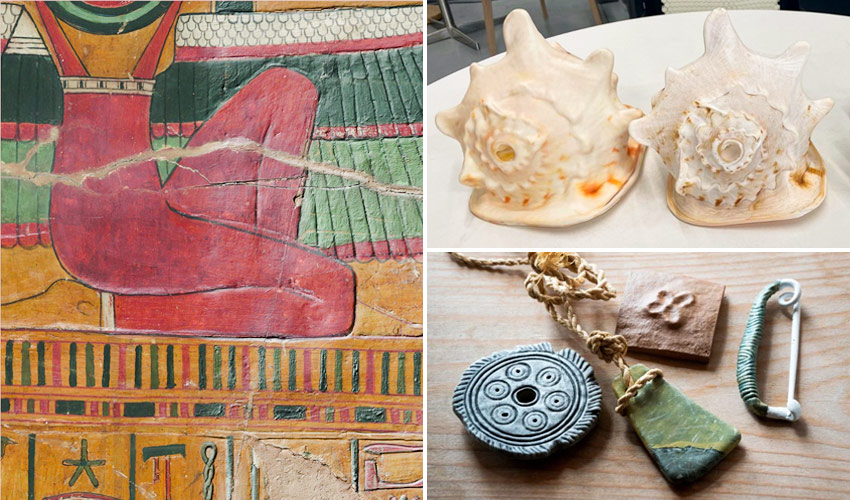
As defined by UNESCO, cultural heritage encompasses artifacts, monuments, sites and museums that hold significant value, whether symbolic, artistic, aesthetic or social. These can be thought of as the objects and areas that help define who we are as a culture or society. And it is for that reason that it is so important to preserve. However, inclement weather, vandalism and just the passage of time all can make preserving cultural heritage difficult. Luckily, there may be a solution, thanks to 3D technologies. Indeed, 3D scanning and 3D printing have long been used in this manner, especially thanks to projects like Scan the World and Twin It!, both of which aim to capture important heritage in order to have a common data space for cultural heritage. That’s why, in the following listing, we decided to show how 3D technologies are being used to help not just save cultural heritage but also make it accessible to a wider audience with some of the most interesting applications from around the world.
Easter Island Heads
The Moai statues on Rapa Nui, more colloquially referred to as the Easter Island heads, have always captured the imagination of the world, leading them to star in movies, TV shows and more. However, back in October 2022, a catastrophe occurred. A fire damaged many of the statues over an affected area of 100 hectares, with locals considering it irreparable damage to the archeological site. Enter Scan the World. The project from MyMiniFactory is the largest ecosystem to share digital, 3D scanned cultural artifacts and after this incident, Scan the World called for users to redouble efforts to scan and 3D print objects in order to preserve global heritage. They also shared files, which would allow people to print their own. An excellent way to turn tragedy into hope.
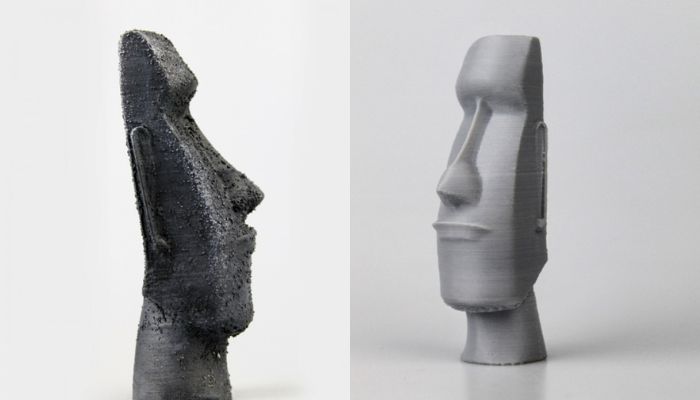
A digitalized representation (left) and how it would look printed (right) of a Moai statue (image credits: Scan the World)
3D Printed Māori Instruments
3D printing is also useful for creating replicas of cultural pieces that may be fragile and precious, like Māori instruments. The Māori of mainland New Zealand, who are an indigenous Polynesian people, have instruments that carry a great deal of cultural importance. Professor Olaf Diegel of the University of Auckland, along with the Māori community, chose to recreate the pūtātara (a conch shell trumpet) and a pūkāea (a long trumpet traditionally carved from wood) with 3D printing. Using CT scans, Diegel formed 3D models with the shapes necessary to accurately recreate the instruments’ sound. These replicas are not meant to replace the original instruments but instead serve as educational tools. Discover more about the project in the video below:
Replicating Vedic Scriptures
Since it was established in 2006 by Dr. P.R. Mukund, the Bengaluru-based Tara Prakashana nonprofit trust has saved over 3,300 ancient palm leaf manuscripts, largely concerning centuries-old Vedic literature and teachings. Vedicism is one of the major influences of early Hinduism, and the trust is on a mission to preserve and pass along knowledge from these ancient Vedic sources. In 2024, Tara Prakashana opened the first 3D printing laboratory for manuscript preservation in India, with their first project being to 3D print the world’s oldest copy of the Bhagavad Gita, a Hindu scripture. Using an FDM 3D printer, the team will recreate the scripture with plastic filament, ensuring that the text will be preserved for generations to come.
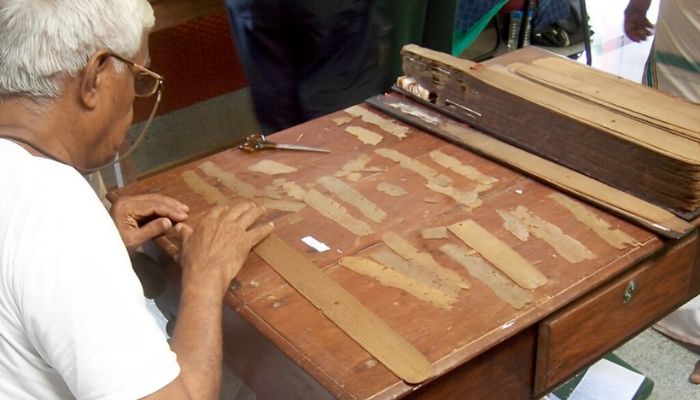
Palm-leaf manuscripts. (Image credits: Tara Prakashana)
Renovating a Traditional Chinese House with 3D Printing
In China, professors at the University of Hong Kong renovated an old wooden house by integrating 3D printed walls. This project, called Traditional House of the Future, combines traditional architecture with modern technology to revitalize the rural landscape and adapt to the community’s needs. As part of a government initiative in Nanlong village, the team scanned and disassembled the original structure and then expanded it with 3D printed walls. These new additions allowed for the creation of more functional spaces, such as an entrance courtyard, kitchen and bathrooms, improving the flexibility of the dwelling. After the walls were built, the original elements, such as the timber frame and tile roof, were reintegrated. This approach demonstrates once again how 3D printing helps preserve architectural heritage while introducing sustainable and adaptable solutions.
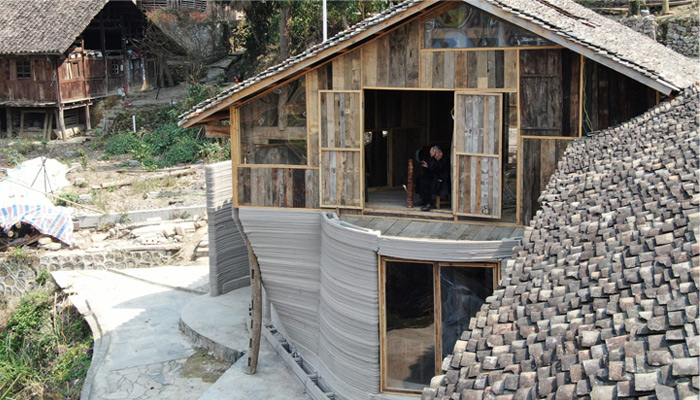
Image Credits: Lidia Ratoi/John Lin
The Reconstruction of the Temple of Bel in Palmyra
Researchers at the University of California, San Diego, have digitally recreated the ancient Temple of Bel in Palmyra, which was destroyed in 2015 during the Syrian civil war. Using more than 1,000 photographs that were taken before its destruction, a high-resolution, photorealistic model was generated using 3D modeling that preserves every architectural and artistic detail of the temple, including the artwork and inscriptions that covered it. The reconstruction of the temple with these techniques took a year, as it is an unprecedented project. The model is now part of the university’s repository and serves as a key reference for heritage preservation and future reconstructions.
The Restoration of the Fontana di Melograno
Another very interesting project is that of the DITAG Department of the Polytechnic University of Turin, which has chosen Creaform’s Handyscan 3D scanner to improve the documentation and restoration of cultural monuments. DITAG has used LIDAR remote sensing technology before, but that technology is more suitable for mapping than scanning smaller details. Therefore, DITAG needed to implement Creaform’s Handyscan 3D scanner. This tool allows for high accuracy (down to 0.05 mm) with portability and ease of use. The Handyscan 3D scanner consists of two cameras, four LEDs mounted around each camera, a red cross laser module and retro-reflective adhesive targets. Using this tool, DITAG scanned the Fontana di Melograno in the medieval Valentino Fortress in Turin to restore it. It is a replica of the 16th-century Fontana di Melograno, the original version of which is located in the castle of Issogne in the Aosta Valley. Made by blacksmith Cesare Bianchi of Orta, this copy was presented at the 1911 Historical-Archaeological and Artistic Exhibition in Rome. For the restoration, the scholars used the 3D Handyscan to capture the interior surfaces in precise detail and the LIDAR system to map the larger, less detailed areas. The combination of these two technologies resulted in an accurate, multi-resolution representation, ensuring the success of the restoration.
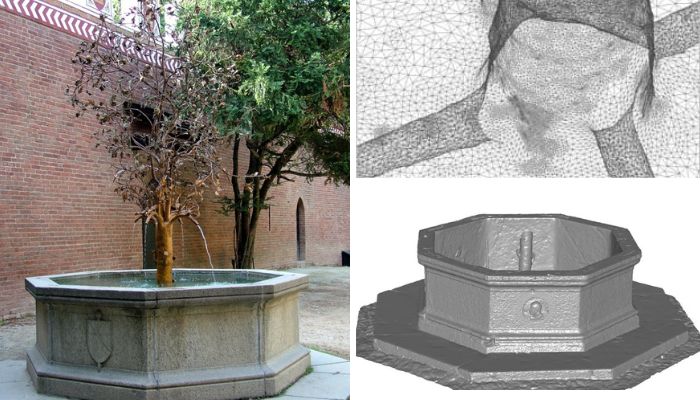
On the left is a photo of the Fontana di Melograno; on the right are digital surveys obtained with Creaform’s 3D Handyscan. (Image credits: left MuseoTorino, right Creaform)
3D Reconstruction of the Tomb of Seti I Using LiDAR Scans
In 2001, Factum Arte began the detailed documentation of the tomb of Seti I in the Valley of the Kings. The aim was to create a high-precision replica of the archaeological site. The FARO Focus 3Dx230 scanner was used to measure the architectural structure and spatial relationships within the tomb. This LiDAR scanner captured the geometry of the tomb from 70 different positions, with an average measurement point distance of 1.5 to 3 mm. While LiDAR technology provides accurate spatial data, it is not sufficient to capture fine surface details in high resolution.
As a solution to this, the Factum Foundation developed the Lucida 3D Scanner, which is particularly suitable for capturing bas-reliefs, painted walls and carvings and can capture up to 100 million points per square meter, providing such a high resolution that even fine cracks and brushstrokes become visible. The captured laser scan data was then registered in Faro Scene to generate an E57 point cloud. The photos were then optimized in Lightroom to improve exposure, clarity and colouring and the data was imported into Reality Capture for further processing. A step-by-step reconstruction was then carried out there: the images were divided by room, individually aligned and exported in components. Finally, all components were registered and merged, using the laser scan data as a precise reference.
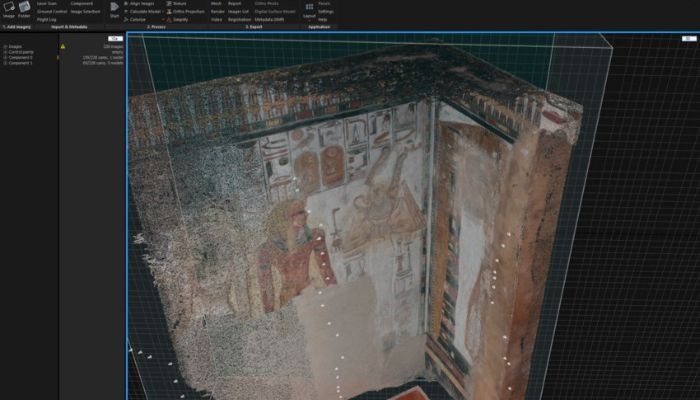
A point cloud of laser scans and photos merged in RealityCapture. (Image credits: Factum Foundation
Modifié)
Digital Documentation of UNESCO World Heritage Site Polonnaruwa
The UNESCO World Heritage Site of Polonnaruwa in Sri Lanka includes the ruins of an ancient garden created by Parakramabahu I in the 12th century. In March 2019, a team carried out an eight-day field campaign to document this important cultural heritage site. The aim was to create a digital record of the ruins and provide data for future restorations. The documentation was based on a network of digital models of sixteen structures captured by laser scanning and photography. Floor plans, sections and elevations were then derived from the 3D scans to provide a complete picture of the archaeological site. A major advantage of photogrammetry is its non-contact recording method, which is particularly important when surveying a cultural monument. Furthermore, the team combined drone and terrestrial photography with laser scanning to create high-resolution models, detailed in geometry and color. RealityCapture also proved to be an important addition, as it offered the ability to combine photography and laser scanning and process large amounts of data efficiently.
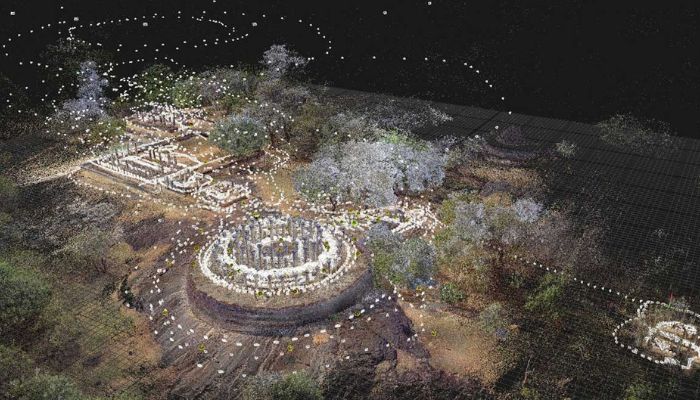
A screenshot from RealityCapture. (Image credits: RealityCapture)
Making Historical Films with 3D Scanners
It’s no secret that conflicts and wars have a heavy impact on heritage and culture. Iraq, for example, is one of the countries that has seen a great deal of destruction. Yet this is a region rich in history, as it was once part of Mesopotamia, the cradle of civilization. A few years ago, filmmaker Ivan Erhel initiated a film project to document the cultural riches of this area. The story is about a man who wants to preserve what’s left of Iraq’s heritage using 3D digitization. Several Artec3D solutions have been used to scan the country, from small objects to walls several meters high. Ivan Erhel explains: “At several points throughout history, Baghdad has been at the top of the world. Perhaps now we can reunite the country a little bit, and also remind the world what we all owe to Mesopotamia – because 90% of our culture originates from here, we owe them everything.”
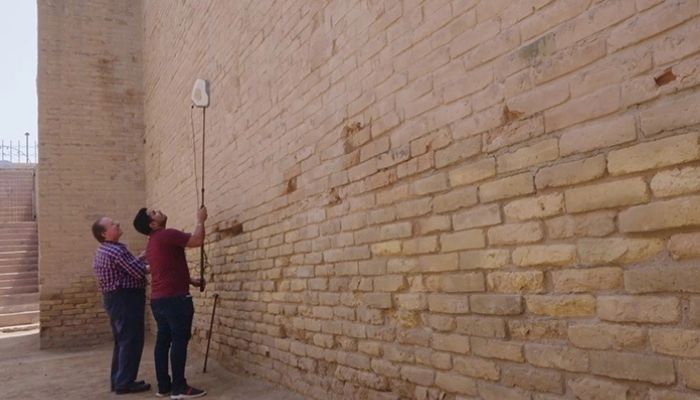
The team used the Artec Eva scanner to digitize the walls (image credits: Ivan Erhel).
Mapping the Hukuru Miskiy in Malé in the Maldives
The Malé Hukuru Miskiy, which translated means “The Friday Mosque,” is one of the most important historical sites in the Maldives and is located in the capital, Malé. The Hukuru Miskiy is currently included in UNESCO’s provisional list of World Heritage Sites. The site, built in 1658 during the reign of Sultan Ibrahim Iskandar, includes the mosque structure, the 17th-century cemetery, and the minaret. It is the largest building in the world constructed using coral. Detailed documentation of the mosque complex and further conservation and renovation work must be provided for it to be officially listed by UNESCO. The Maldives Heritage Department therefore commissioned Water Solutions Pvt Ltd to carry out 3D mapping of the site, filling the lack of drawings or historical documents related to its construction.
Water Solutions, a company specializing in environmental mapping and consulting, used the Leica BLK360 laser scanner, the Leica Viva TS16 total station, and the Leica GS18 T GNSS RTK rover. Despite the difficulties associated with confined spaces and intricate architectural details, thanks to these instruments, the scholars captured the entire archaeological site in just a few days. The digitization of the complex will make it possible to preserve its architecture and support future restoration work. The data collected will be used for the rehabilitation of the roof and as the basis for the official application to the UNESCO list.
Increasing Cultural Heritage Accessibility with 3D Printing
Among the applications of additive manufacturing in the art and cultural heritage sector is the work of Italy-based Hi.Stories. The company’s mission is to enhance cultural heritage through 3D technologies, leveraging their potential to create interactive pieces for cultural places. In particular, Hi.Stories uses 3D printing to create tactile paths for the visually impaired and improve museum accessibility. In addition, the company 3D prints artifacts for educational purposes or that are momentarily on loan so that cultural institutions can show copies to the public.
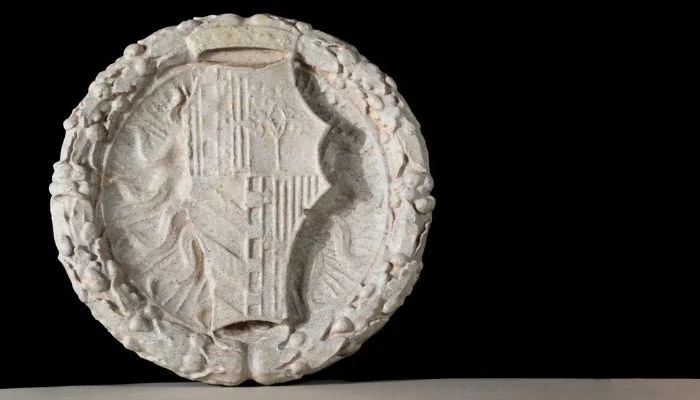
3D printing of an ancient coat of arms (image credits: Hi.Stories)
3D Printed Paganini Violin for Modern Cultural Mediation
To mark the 70th anniversary of the Premio Paganini in 2023, the organizer of the same name came up with a special marketing strategy. Premio Paganini collaborated with the Italian 3D printing company 3DiTALY from Rome to 3D print the renowned violin “Il Cannone” by the composer and “devil’s violinist” Paganini. The original, which was made by violin maker Guarneri, can be found in the Palazzo Tursi in Genoa. It was measured using 3D scanning and then reprinted 1:1. To do this, 3DiTALY used the SLA process and white resin. One particular challenge was the numerous details and the required support structures, which had to be carefully removed after printing. The image from the 3D printer was then fitted with red nylon strings.
For Genoa’s mayor, Marco Bucci, the 3D-printed violin is not just an intelligent marketing initiative but also a modern approach to cultural education. The violin is intended to arouse interest in (music) history and give Paganini’s dusty image a new lease on life. “This is a great promotional initiative for the Premio Paganini, which will also be popular with young people. The 3D “Cannone” is an extra opportunity provided by new technologies, and it can be brought to schools and all over the city to recount Paganini in an unconventional way” says Bucci.
Which use of 3D technologies for cultural heritage was your favorite? Let us know in a comment below or on our LinkedIn, Facebook, and Twitter pages! Don’t forget to sign up for our free weekly Newsletter here, the latest 3D printing news straight to your inbox! You can also find all our videos on our YouTube channel.






